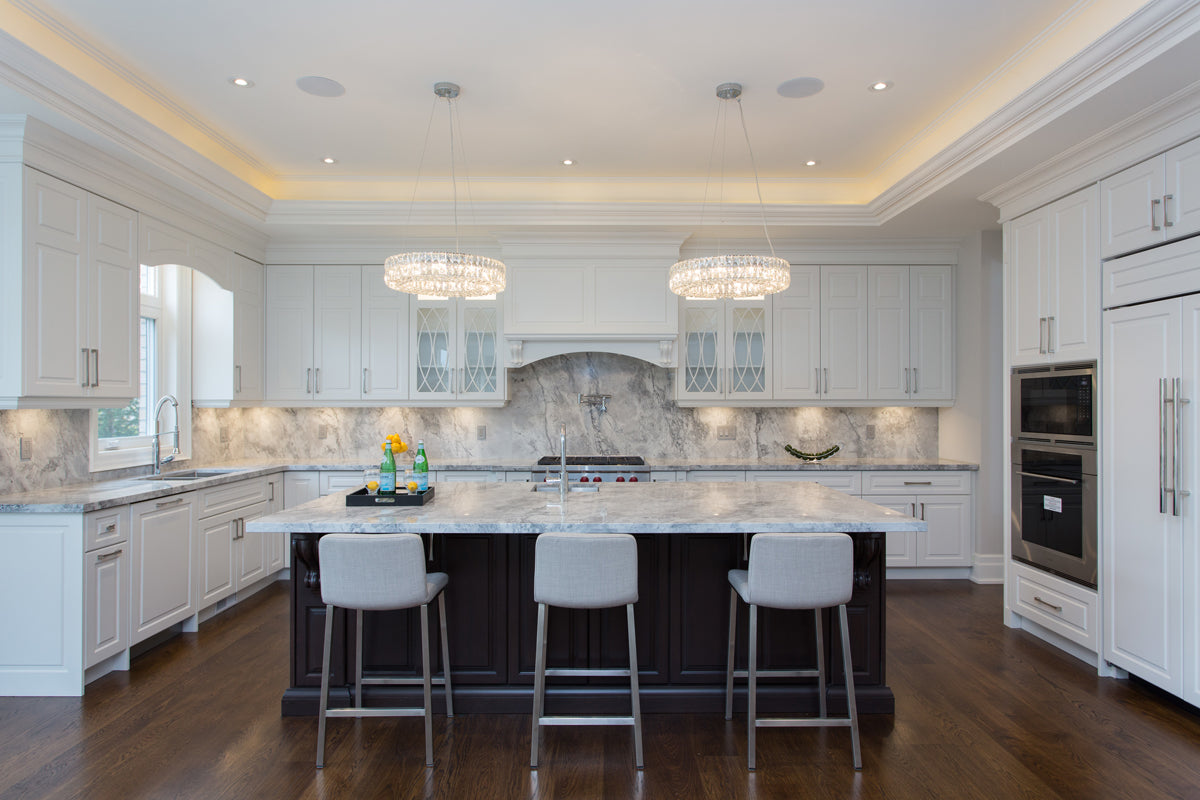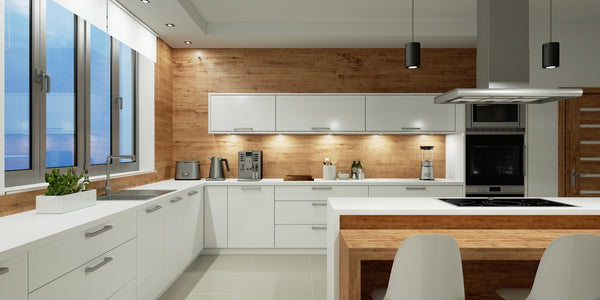On orders $99+
On orders $99+

The best type of lighting for a kitchen is a harmonious blend of ambient, task, and accent lighting. Ambient lighting, provided by recessed ceiling lights or flush mounts, sets the overall tone and illuminates the space evenly. Task lighting, crucial for cooking and preparation areas, is best achieved through under-cabinet lights or focused pendant lights over islands and countertops. Accent lighting adds depth and character, highlighting architectural features or decorative elements. This layered approach not only ensures a well-lit and functional kitchen but also creates a warm and welcoming atmosphere. Choosing energy-efficient options like LED lights further enhances the kitchen's functionality while being environmentally conscious.
Now, let's unpack this.
When it comes to remodeling a kitchen or crafting a new one, the significance of lighting cannot be overstated. It's a pivotal element that transcends its functional purpose to become an integral part of the kitchen's soul and ambiance. For DIY homeowners ready to transform their culinary spaces and aspiring interior designers seeking to create impactful kitchens, understanding the nuances of kitchen lighting is key. Let’s explore this world, rich with possibilities and creativity.

Ambient lighting in the kitchen does more than just illuminate; it sets the stage for the entire culinary experience.
Visualize a lazy Sunday morning; your kitchen bathed in a soft, ambient light that invites you to brew a cup of coffee and linger over breakfast. This foundational layer of light sets a tone of comfort and ease, crucial in a room that's often the heart of the home.

In a kitchen, task lighting is about precision and focus.
Think about the intricate tasks performed in the kitchen – from reading recipe books to measuring ingredients. The right task lighting ensures these actions are done under clear, bright light, marrying functionality with aesthetic appeal.
Accent lighting in a kitchen is akin to adding jewelry to a well-tailored outfit. It enhances and elevates.
Accent lighting is about highlighting the kitchen’s best features. It’s the light that turns a backsplash into a focal point, and a well-placed spotlight that turns your favorite piece of wall art into a conversation starter.
In smaller kitchens, the right lighting can make a world of difference. It’s about choosing fixtures that are proportional and provide sufficient light without overwhelming the space. Recessed lights can be a saving grace here, offering ample illumination without taking up visual space.
For kitchens bathed in natural light, the interplay with artificial lighting needs careful consideration. During the day, maximize natural light, perhaps complementing it with soft, ambient lighting. As the evening sets in, warmer artificial lights can take over, ensuring the kitchen remains a beacon of warmth and hospitality.
Sustainability is no longer just a trend; it’s a necessity. Opt for LED lighting solutions – they’re energy-efficient, long-lasting, and come in a variety of tones. This approach not only reduces your carbon footprint but also cuts down on electricity bills.
Your kitchen’s lighting should align with its overall style. For modern spaces, minimalist and sleek fixtures work wonders, while traditional kitchens can benefit from lighting with classic designs and richer textures.
The journey to selecting the perfect kitchen lighting is both an art and a science. It’s about creating a layered lighting scheme that combines ambient, task, and accent lighting to create a space that’s both functional and inviting. For homeowners and designers alike, understanding these nuances can transform a kitchen from a mere functional area into a vibrant heart of the home. With thoughtful planning, creativity, and an eye for detail, kitchen lighting can elevate the culinary experience, making it not just a place for cooking, but a space for living, laughing, and creating memories.
Helpful Links:
Transform your kitchen with our designer selection of Kitchen Lighting fixtures
Illuminating Harmony: The Art and Science of Layered Lighting
Leave a comment